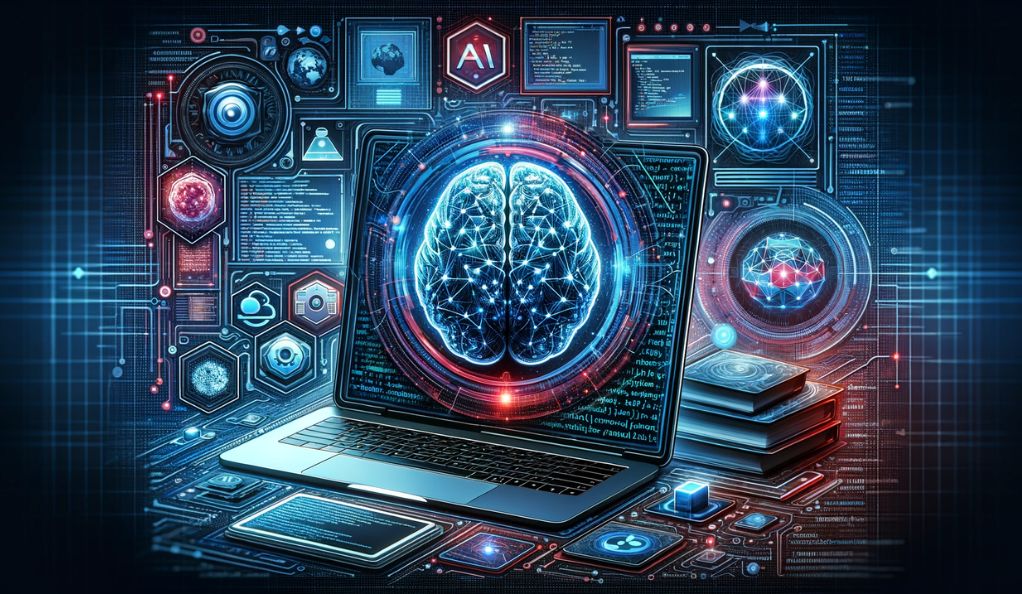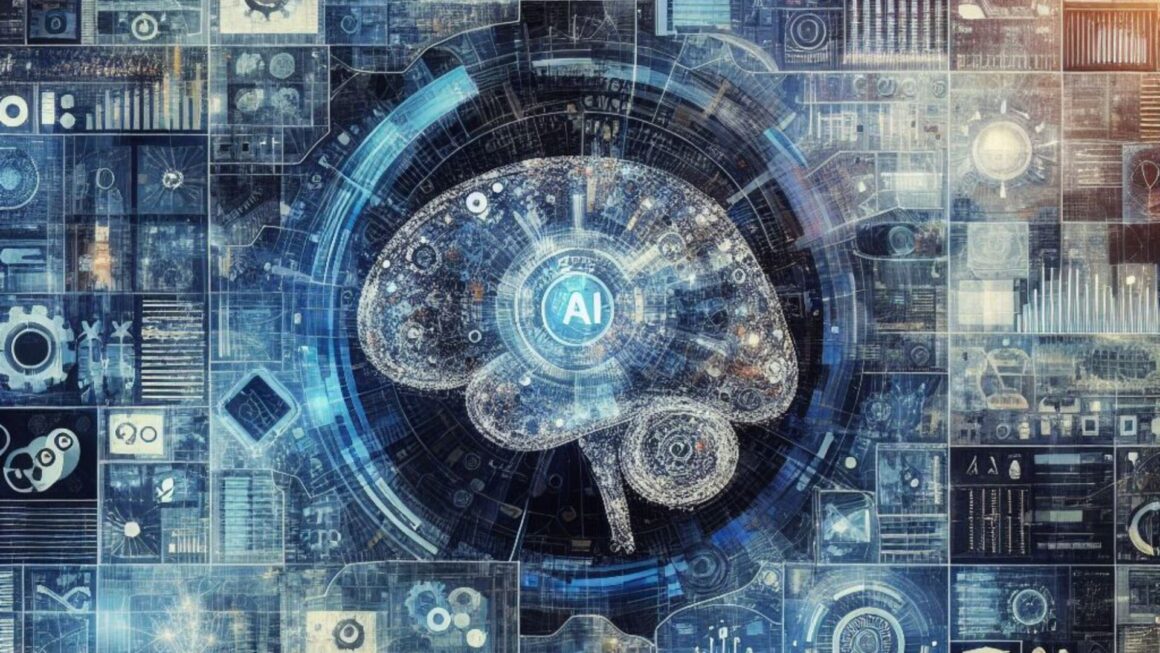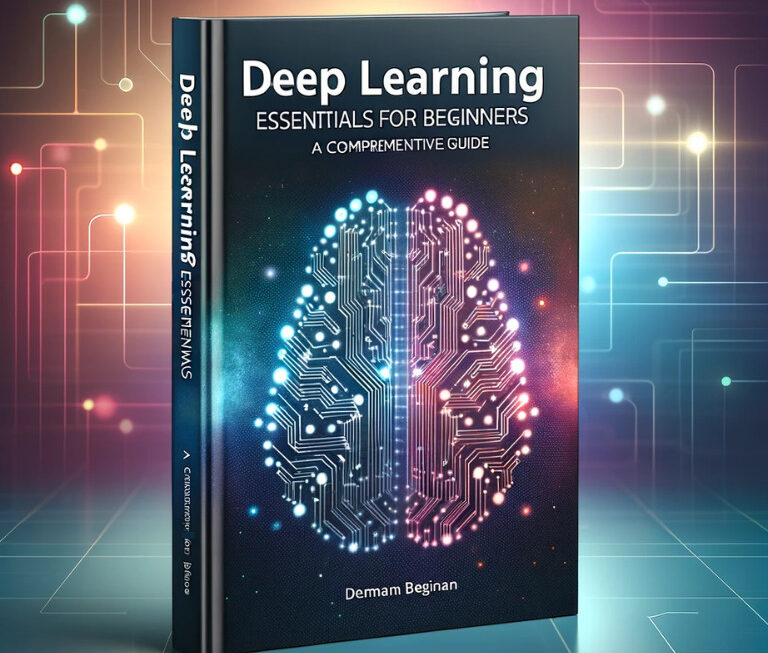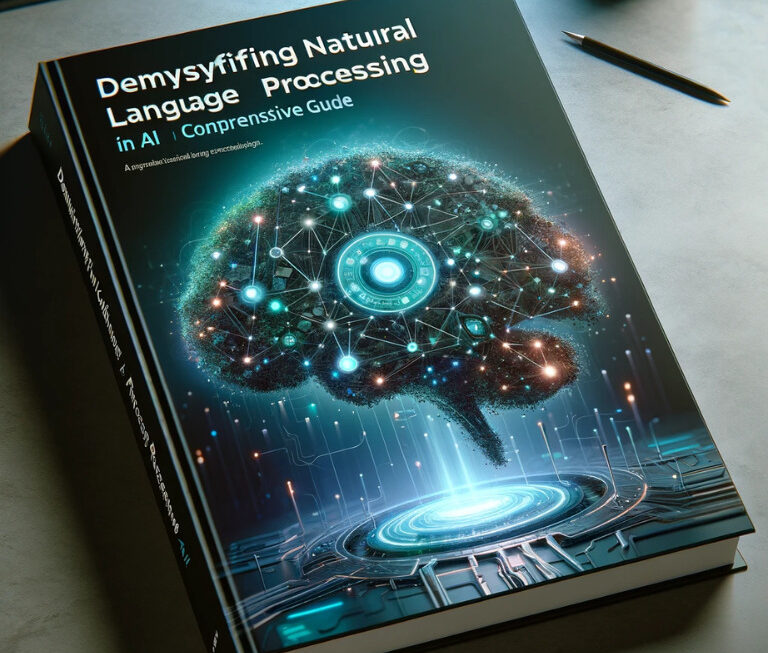Ruby on Rails, a powerful web development framework, has been pivotal in building robust web applications with its Model-View-Controller (MVC) architecture. However, the integration of Artificial Intelligence (AI) within Ruby on Rails marks a revolutionary stride, offering unprecedented capabilities in web application development.
Revolutionizing Web Development with AI
AI’s integration into Ruby on Rails opens up a plethora of opportunities for developers to enhance application functionality and efficiency. This synergy allows for smarter application behavior, predictive features, and optimized code efficiency, taking the Rails MVC architecture to new heights.
The Convergence of Ruby and AI
The implementation of AI in Ruby on Rails is not just about injecting intelligent features into applications. It’s about redefining the way Rails handles data, processes requests, and interacts with users. AI algorithms can analyze vast datasets, learning from them to make informed decisions, automate tasks, and predict outcomes. This transformative approach elevates Rails applications from mere data processors to intelligent entities capable of dynamic responses and actions.
The Practicality of AI in Rails
Integrating AI into Ruby on Rails is more than a theoretical enhancement. It’s a practical approach to solving complex problems. For instance, AI can be used for predictive coding in Ruby, helping developers write more efficient and error-free code. This integration is not just about adding AI capabilities on top of existing Rails applications but seamlessly fusing them to enhance performance and functionality.
The Synergy of Rails MVC and AI Optimization

Ruby on Rails is renowned for its efficient MVC architecture, which separates an application into three interconnected components: Model, View, and Controller. This architecture promotes clean, manageable, and efficient code development. The integration of AI into this structure takes its efficiency a step further.
Enhancing the Model Component with AI
The Model, which represents the data and business logic of a Rails application, can be significantly enhanced with AI. By applying machine learning algorithms, the Model can predict user behavior, automate data analysis, and personalize user experiences. AI can process large datasets, detect patterns, and make intelligent predictions, thereby optimizing the database interactions and business logic within the application.
AI-driven Views: A New User Experience
The View component in Rails, responsible for the user interface, can be revolutionized with AI. Imagine a user interface that adapts in real-time based on user behavior, offering personalized content and interactive elements. AI can analyze user interactions to dynamically adjust the UI, improving user engagement and satisfaction.
Smarter Controllers with AI
Controllers act as an intermediary between Models and Views, handling user requests and updating the View. AI can enhance this component by predicting user requests and pre-fetching necessary data, reducing response times and improving application performance. Additionally, AI-driven controllers can automate responses to routine user queries, enhancing the application’s efficiency.
The integration of AI into the Rails MVC architecture represents a significant leap in web application development. It not only optimizes each component but also ensures they work together more intelligently, creating a more cohesive and responsive application.
Predictive Analytics: Translating Data into Insights
The incorporation of predictive analytics in Ruby on Rails applications signifies a transformative leap in how data is utilized. Predictive analytics, powered by AI, enables applications to not just analyze data but to forecast trends, anticipate user needs, and make data-driven decisions.
Data-Driven Decision Making
With AI, Rails applications can process and analyze vast amounts of data to identify patterns and trends. This capability allows for predictive modeling, where future outcomes are forecasted based on historical data. Such foresight can be instrumental in sectors like e-commerce, where predicting consumer behavior can optimize inventory management and personalize user experiences.
Enhancing User Engagement
Predictive analytics can tailor user experiences by anticipating user needs and preferences. For instance, a Rails application can suggest products, content, or services to users based on their past behavior and interactions. This level of personalization not only enhances user engagement but also drives business growth through targeted marketing and improved customer service.
Real-time Analytics for Instant Insights
Real-time data processing and analytics allow Ruby on Rails applications to provide instant insights. This is crucial in scenarios like fraud detection, where immediate analysis can prevent potential threats. Real-time analytics ensure that Rails applications remain responsive and agile, capable of adapting to new data as it emerges.
AI-Powered Tools for Ruby Code Enhancement
ruby
# Ruby code for image recognition using an AI model
class ImageRecognitionController < ApplicationController
def recognize
image_data = params[:image_data]
# Use an AI model to recognize objects in the image
ai_model = ObjectRecognitionModel.new
recognized_objects = ai_model.recognize(image_data)
# Process the recognized objects and return the results
render json: { recognized_objects: recognized_objects }
end
endThe integration of AI into the Ruby on Rails development process offers significant advancements in code quality and efficiency. AI-powered tools can analyze and optimize Ruby code, leading to improved performance and reduced development time.
Automated Code Optimization
AI tools can automatically identify inefficiencies and potential errors in Ruby code, suggesting optimizations and corrections. This not only speeds up the development process but also enhances code quality, making applications more robust and reliable.
Predictive Coding Assistance
AI-powered predictive coding tools can anticipate a developer’s next move, offering suggestions and completing code snippets. This feature accelerates the coding process, reduces manual errors, and allows developers to focus on more complex tasks.
Refactoring and Code Reviews
AI can assist in code refactoring by analyzing existing codebases and suggesting improvements. It can also aid in code reviews by providing automated assessments of code quality, ensuring consistency and adherence to best practices.
Machine Learning Model Integration in Rails
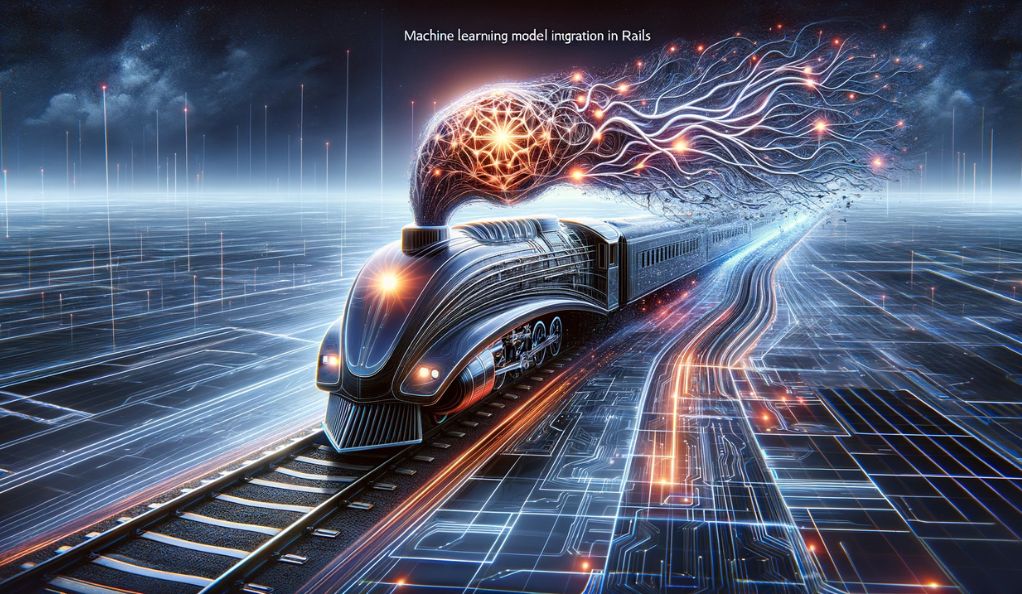
Integrating machine learning models into Ruby on Rails applications unlocks a new dimension of intelligence and functionality. This integration allows Rails applications to learn from data, make predictions, and adapt over time.
Building Custom ML Models for Rails
Developing custom machine learning models tailored to specific business needs is a key aspect of this integration. Whether it’s for image recognition, natural language processing, or predictive analytics, these models can be built using AI frameworks like TensorFlow and then integrated into Rails applications.
Seamless Integration with Rails Framework
Integrating these models into the Rails framework involves creating APIs or microservices that enable communication between the Rails application and the AI models. This allows the application to leverage the power of AI while maintaining the efficiency and structure of Rails.
Challenges and Solutions
While integrating ML models presents challenges like data processing and model training, solutions like containerization and cloud computing help in managing these complexities, ensuring that the Rails application remains scalable and efficient.
Deploying Scalable AI Models with Rails
The deployment of AI models in a Ruby on Rails environment is a critical step in ensuring the application’s scalability and performance. This phase is about making the AI integration not just functional but also efficient and reliable at scale.
Embracing Containerization and Cloud Deployment
Containerization technologies like Docker and Kubernetes play a vital role in the deployment of AI models. They provide an isolated environment for each component, ensuring consistency across different development and production environments. Cloud platforms such as AWS, Azure, and Google Cloud Platform are used to deploy these containerized applications, offering scalability and flexibility.
Implementing Continuous Integration and Continuous Deployment (CI/CD)
CI/CD pipelines are essential for maintaining and updating AI models within Rails applications. Tools like GitHub Actions and Jenkins automate the deployment process, ensuring that updates are smoothly integrated without disrupting the application’s functionality.
Monitoring and Optimization
Once deployed, continuous monitoring is crucial to ensure optimal performance. Tools like Grafana and Sentry provide real-time insights into the application’s performance, helping in identifying and resolving issues promptly. Additionally, techniques like model quantization and pruning are employed to optimize the AI models, ensuring they remain efficient even as they scale.
Real-World Applications: AI in Action with Rails
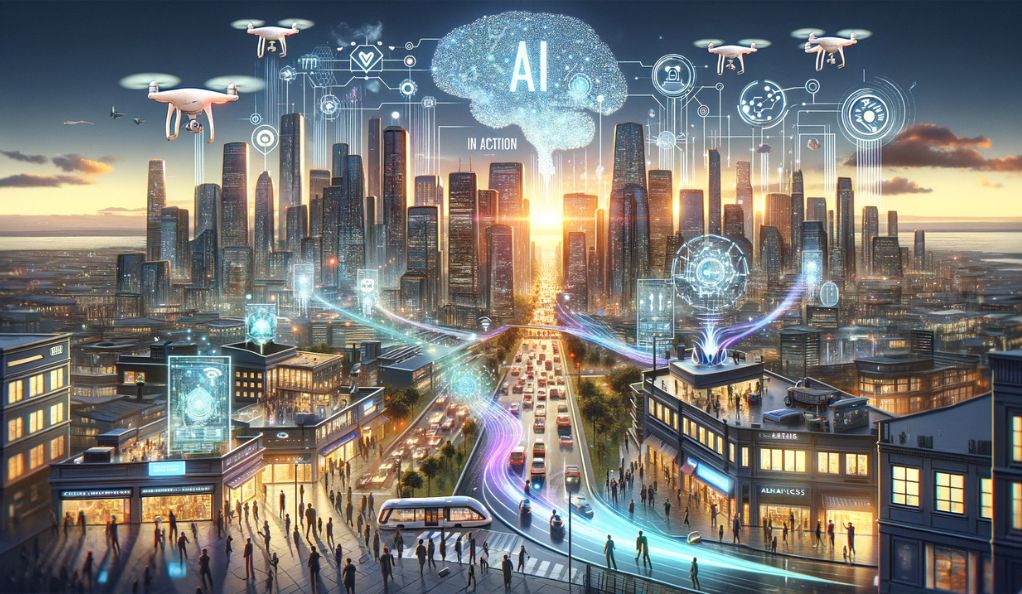
AI integration in Ruby on Rails isn’t confined to theory; it’s making waves in real-world applications across various industries. In this section, we’ll explore practical use cases where AI enhances Rails applications.
E-commerce Personalization
E-commerce platforms leverage AI to recommend products, personalize user experiences, and optimize pricing strategies, boosting sales and customer satisfaction.
Healthcare Diagnosis
AI-driven Rails applications assist healthcare professionals in diagnosing diseases, analyzing medical images, and predicting patient outcomes, improving patient care.
Financial Fraud Detection
Rails applications equipped with AI models detect fraudulent transactions in real-time, safeguarding financial institutions and their customers.
Natural Language Processing
AI-powered chatbots and language processing tools in Rails streamline customer support, enhancing user interactions.
Predictive Maintenance
In industries like manufacturing and aviation, AI-enhanced Rails applications predict equipment failures, reducing downtime and maintenance costs.
Future Trends: AI and Rails Development
The integration of AI into Ruby on Rails is an ever-evolving field with exciting prospects. Here, we explore the future trends that are shaping the landscape of AI-powered Rails development.
Explainable AI
Developers are focusing on creating AI models that provide transparency in decision-making, making it easier to understand and trust AI-driven outcomes.
AI Ethics and Fairness
Ethical considerations are gaining prominence, with a focus on developing AI models that avoid biases and ensure fairness in their predictions and recommendations.
AutoML and No-Code AI
The emergence of AutoML and no-code AI platforms is democratizing AI development, allowing non-experts to harness AI’s power in Rails applications.
Edge AI
Edge computing combined with AI is becoming essential, enabling real-time processing and decision-making at the edge of the network, enhancing responsiveness.
AI for Sustainability
AI is being leveraged in Rails applications to address environmental and sustainability challenges, such as energy optimization and waste reduction.
Conclusion
In conclusion, the integration of Artificial Intelligence (AI) into Ruby on Rails represents a transformative leap in web application development. The synergy of Rails’ MVC architecture with AI optimization enhances every component of the framework, from code quality and user interfaces to predictive analytics and real-time insights. AI-powered tools streamline development, while machine learning model integration opens new horizons for intelligent applications. Deploying scalable AI models ensures efficiency, and real-world applications across various industries showcase AI’s real impact. Looking ahead, AI in Rails is poised for future trends like explainable AI, ethics, and sustainability, promising an exciting future for developers and users alike.

